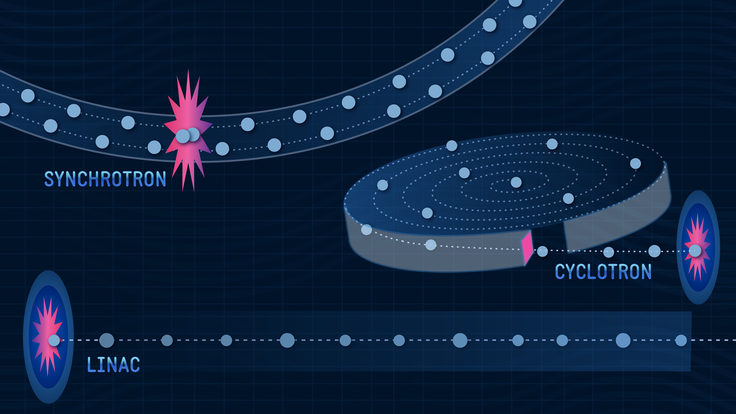Updated March 29, 2008 (see below for first offer of help)
When many teenagers come home from astronomy camp, they want to become astronauts, with dreams of being the first to visit something beyond the Moon. Heidi Baumgartner, Peter Heuer, and German Diagama came home from camp two years ago with a different dream: to be the first teenagers to create antimatter.
Heidi had drawings of particle accelerators in her journal, which inspired Peter to ask, “Why don’t we build one?” In the years since, their plans have developed and they spent their free time at camp last summer in the library digging for information to help in their quest to build a cyclotron. (The first cyclotron ever built was featured on the cover of symmetry in August 2007 and in the Life List story in that issue.)
The rough schematic drawing Heidi sketched, shown here, includes some of the main parts of the cyclotron. She also has a bunch of more technical drawings and details.
This is not merely an engineering challenge for the students. Heidi wants to use the cyclotron to create positrons and do experiments on the effect of high-energy radiation on biological tissue.
Building a complex device like this isn’t the easiest task, of which the students are well aware. They don’t have easy access to physics labs and people to help. Just to make things more challenging, they all live in different places—Heidi and German live in New York City and Peter lives in Maryland.
I’m a big fan of students who want to take on ambitious tasks like this and I encourage anybody who can offer advice, assistance, or materials to get in touch. I’ll leave it to Heidi to talk more about what they need to continue their project. If you can help, just email me and I’ll pass on your information to Heidi.
As the project continues, we’ll keep you updated on the team’s progress and see if we can help them build a working cyclotron. For now, here is more about the project in Heidi's own words.
Peter Heuer, German Diagama, and I met at astronomy camp at the Kopernik Observatory in Vestal, New York, two summers ago. At first, none of us took the idea of building a cyclotron seriously, but we started doing research and plans gradually developed.
Our dream is to be the first teenagers to produce antimatter. To obtain enough energy to produce positrons, we need to accelerate particles to at least 1.3 MeV. We decided to accelerate protons, so our dees (hollow D-shaped resonant cavities) will have a radius of eight inches, carry an electric field oscillating at 25.3 MHz, and a 1.6 T magnetic field. The dees must be in a chamber evacuated to at least 10^4 torr. In addition to creating positrons, we want to see the effects of radiation on various materials including biological tissue. Our options are open as to what else we will be able to do with the cyclotron, and we will enter the most successful experiment into the Intel International Science and Engineering Fair in 2009.
We already have pieces of aluminum for the chamber, copper sheets to make the dees, and insulated rods that constitute the dee supports and leads. We've bought a signal generator which will provide the precise frequency needed between the dees. We also have enameled wire for the electromagnets, although a lower gauge wire would allow us to run the accelerator for longer before the magnets get too hot. Parts that we are having more difficulty obtaining include a vacuum pump, an RF amplifier that can step up the signal to at least 3000V, and soft iron for the electromagnet core.
We have detailed designs of all the cyclotron components, but construction hasn't yet begun. This is because of the difficulty we have in obtaining some parts due to their high cost. We are looking for people or companies who are willing to give us advice or aid in achieving our goals.
Heidi Baumgartner
Update: Some great news already for Heidi, German, and Peter. David Hudson of Capitol Vacuum Parts in Virginia has made a generous offer that could supply the students with the vacuum system they need. Thanks, David!







